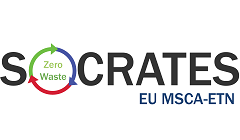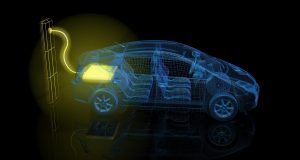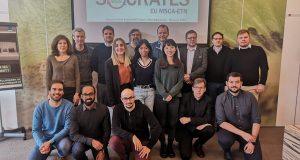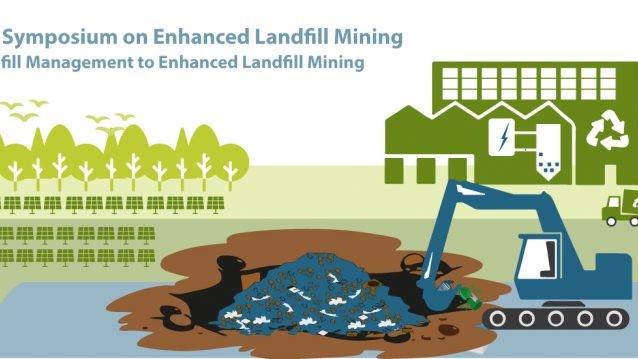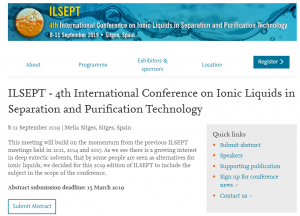 The ILSEPT- 4th “International Conference on Ionic Liquids in Separation and Purification Technology” is taking place in Sitges (Spain) between 08 – 11 September of 2019. The overall aim of this conference is to gather scientists from different fields, researchers, industrialists to discuss and share new cutting edge results on the use of ionic liquids (ILs) and deep eutectic solvents (DESs) in separation applications.
The ILSEPT- 4th “International Conference on Ionic Liquids in Separation and Purification Technology” is taking place in Sitges (Spain) between 08 – 11 September of 2019. The overall aim of this conference is to gather scientists from different fields, researchers, industrialists to discuss and share new cutting edge results on the use of ionic liquids (ILs) and deep eutectic solvents (DESs) in separation applications.
Ionic liquids and deep eutectic solvents are a relatively new kind of solvents which have gathered the attention of the scientific world for some decades now due to their interesting properties. It is known that both ionic liquids and deep eutectic solvents have negligible vapor pressure, thermal and chemical stability, wide liquid range, tunable solvating power. In addition to them the process of production of deep eutectic solvents is very simple and straightforward without the need of any purification steps. For all these reasons, both these new solvents have found application to many fields like metal extraction, industrial waste treatment, environmental remediation, biotechnology, pharmaceuticals, petrochemicals etc. In all these fields, ionic liquids are able to contribute in novel separation and purification technologies that enable the establishment of sustainable industrial processes.
Important dates are:
- Abstract submission deadline: 15 March 2019
- Early registration deadline: 7 June 2019
More information can be found on: https://www.elsevier.com/ilsept-conference

Sitges (Spain) – photo by Lautaro Chamo on Unsplash
Conference topics
This conference has a wide range of topics, including:
Ionic liquids and deep eutectic solvents as advanced materials in
a. Analytical separations
b. Absorption/Adsorption
c. Crystallization
d. Distillation
e. Extraction/Leaching
f. Membrane separations
g. Purification
h. Novel separation processes
Applications of ionic liquids and deep eutectic solvents in
a. Biotechnology and biorefining
b. Chemicals and petrochemicals
c. CO2- capture
d. Environmental remediation
e. Polymerization
f. Surface cleaning
g. Waste treatment
Process modeling and fundamental studies
a. Equations of state
b. Molecular modeling and simulation
c. Electronic structure calculations
d. Process simulation
e. Group contribution modeling
f. QSPR/QSAR modeling
Laboratory to commercialization, “What is needed to drive the use of ionic liquids and deep eutectic solvents for separation and purification”
a. Purity and cost
b. Thermal and chemical stability
c. Toxicity and safety
d. Membrane separations
e. Pilot plant applications
f. “Lessons learned” from industry
g. Scale-up
